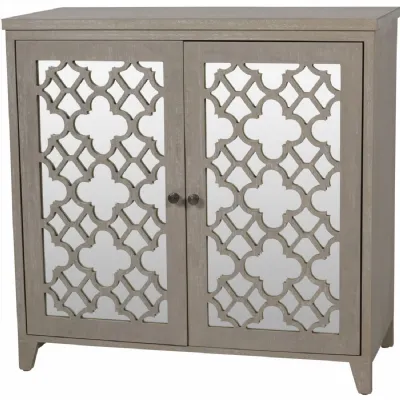Sideboards
Shop Quality Sideboards | CMS Furniture Boutique – Explore Elegant Choices
REFINE RESULTS
- Oak Wooden Oval Sliding Door Small SideboardSTOCK DUE: 09/08/2024

- Natural Oak 2 Door 3 Drawer Large Curved SideboardSTOCK DUE: 09/08/2024

- Solid Dark Wood Oval Rounded Doors Small SideboardSTOCK DUE: 30/09/2024

- Solid Dark Wood 2 Door 3 Drawer Large Oval SideboardGET IT WITHIN 5 DAYS

- Modern Oak 3 Door Wide Sideboard Small Narrow LegsGET IT WITHIN 5 DAYS

- Oak Lacquered 2 Door 2 Drawer Sideboard Adjustable FeetGET IT WITHIN 5 DAYS

- Geometric Natural 4 Door Large SideboardIN STOCK

- Smoked Oak 4 Door Large SideboardSTOCK DUE: 23/08/2024

- Laura Ashley Grey Greystead Wooden Mirrored Slim SideboardIN STOCK

- Laura Ashley Grey Greystead Wooden Mirrored SideboardIN STOCK

- Natural Wooden 3 Door 3 Drawer Wide SideboardSTOCK DUE: 23/08/2024

- Natural Wood Marble Top 2 Door 2 Drawer Open Base SideboardIN STOCK

- Rustic Natural Wood 4 Doors Wide SideboardIN STOCK

- Natural Wood Geometric Small 2 Door SideboardIN STOCK

- Natural Oak Large 4 Door Wide SideboardIN STOCK

- Large Walnut Dark Wood 4 Door Wide SideboardSTOCK DUE: 09/10/2024

- Retro Dark Walnut Wooden Arch Designed 2 Door SideboardIN STOCK

- Rustic Whitewashed Wooden 4 Door 170cm Wide SideboardIN STOCK

- DE Dining White Standard SideboardIN STOCK

- DE Dining Grey Standard SideboardIN STOCK

- CR Dining White Standard SideboardIN STOCK

- CR Dining Grey Standard SideboardOUT OF STOCK

- CR Dining Grey Large Sideboard with LEDIN STOCK

- BE Dining Grey 3 Door SideboardIN STOCK

- Live Edge Russet Large Sideboard with LED Light Russet FinishIN STOCK

- Live Edge Natural Large Sideboard with LED Light Natural FinishIN STOCK

- EA Dining White Standard SideboardIN STOCK

- EA Dining Grey Standard SideboardIN STOCK

- EA Dining White Small SideboardSTOCK DUE: 29/08/2024

- EA Dining Grey Small SideboardIN STOCK

Discover Elegance and Functionality: Sideboards from CMS Furniture Boutique
Welcome to CMS Furniture Boutique, where luxury meets functionality in our exquisite collection of sideboards. Explore our carefully curated selection of sideboards designed to elevate your home decor and provide versatile storage solutions with style.
Distinguishing Between Sideboards and Shelving Units
- Sideboards: Sideboards are low, wide pieces of furniture with cabinets or drawers for storage and a flat top surface for displaying decorative items or serving purposes. They are often used in dining rooms, living rooms, or hallways to store tableware, linens, or other essentials while also serving as a stylish accent piece.
- Shelving Units: Shelving units, on the other hand, consist of open shelves or compartments designed for displaying and organizing items. They are typically taller and narrower than sideboards and are used for showcasing books, decorative accents, or collectables in living rooms, home offices, or libraries.
Usage of Sideboards in UK Homes
In UK homes, sideboards are a staple piece of furniture cherished for their versatility and timeless appeal. They serve a variety of purposes across different rooms:
Dining Rooms: Sideboards are commonly used in dining rooms to store tableware, cutlery, and linens, making them easily accessible during meal times. They also provide additional surface space for serving dishes or displaying decorative items, such as candles or floral arrangements.
Living Rooms: In living rooms, sideboards serve as stylish storage solutions for media equipment, DVDs, or gaming consoles. They can also be used to store board games, magazines, or remote controls, keeping clutter at bay while adding a touch of elegance to the space.
Hallways: Sideboards placed in hallways or entryways offer convenient storage for keys, mail, and other everyday essentials. They also provide a surface for displaying artwork, photographs, or decorative mirrors, welcoming guests with warmth and sophistication.
Alternatives to Sideboards for Living and Dining Rooms
- Buffets: Buffets are similar to sideboards but typically have a shallower depth and may feature more ornate detailing. They offer ample storage space for dining essentials while adding a touch of elegance to the room.
- Console Tables: Console tables with shelves or drawers offer a streamlined storage solution for smaller living or dining rooms. They can be used to store items such as tableware, linens, or decorative accents while maintaining a sleek and uncluttered look.
Tips for Arranging Items on a Sideboard
Start with a Focal Point: Choose a focal point for the sideboard display, such as a piece of artwork, a mirror, or a decorative vase. Arrange items around the focal point to create visual interest and balance.
Balance Symmetry and Asymmetry: Balance the arrangement of items on the sideboard by incorporating both symmetrical and asymmetrical elements. For example, place matching candlesticks or vases on either side of a central object, then offset the arrangement with a stack of books or a decorative tray.
Layer Heights and Textures: Add visual depth to the sideboard display by layering items of varying heights and textures. Mix and match tall vases with low bowls, smooth ceramics with textured fabrics, or shiny metallics with matte finishes to create a dynamic and visually appealing composition.
Consider Functionality: Keep the functionality of the sideboard in mind when arranging items. Ensure that essential items, such as serving platters or tableware, are easily accessible, while decorative items are arranged to complement the overall aesthetic of the room.
Leave Negative Space: Allow for negative space around the items on the sideboard to prevent the display from feeling cluttered. This will help to highlight individual pieces and create a sense of balance and harmony in the arrangement.

 SEARCH
SEARCH
 sales@
sales@